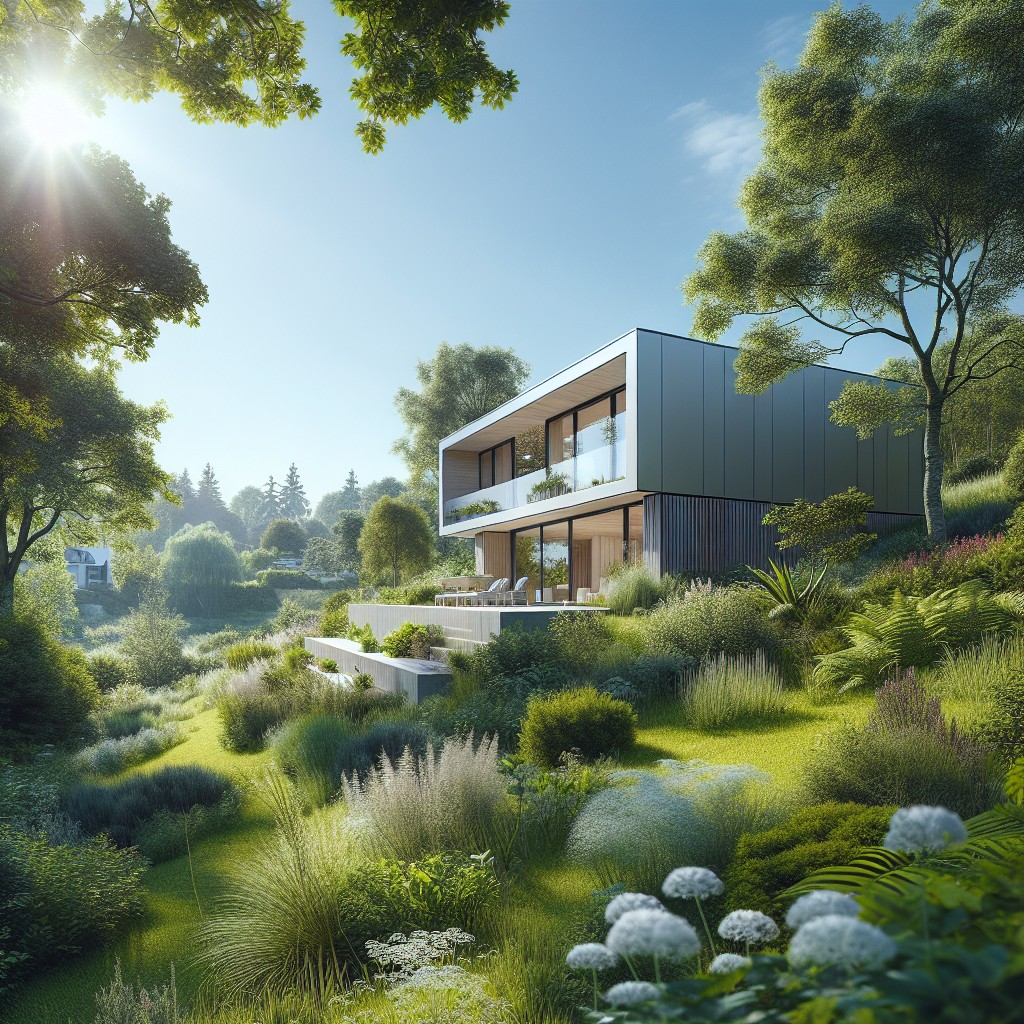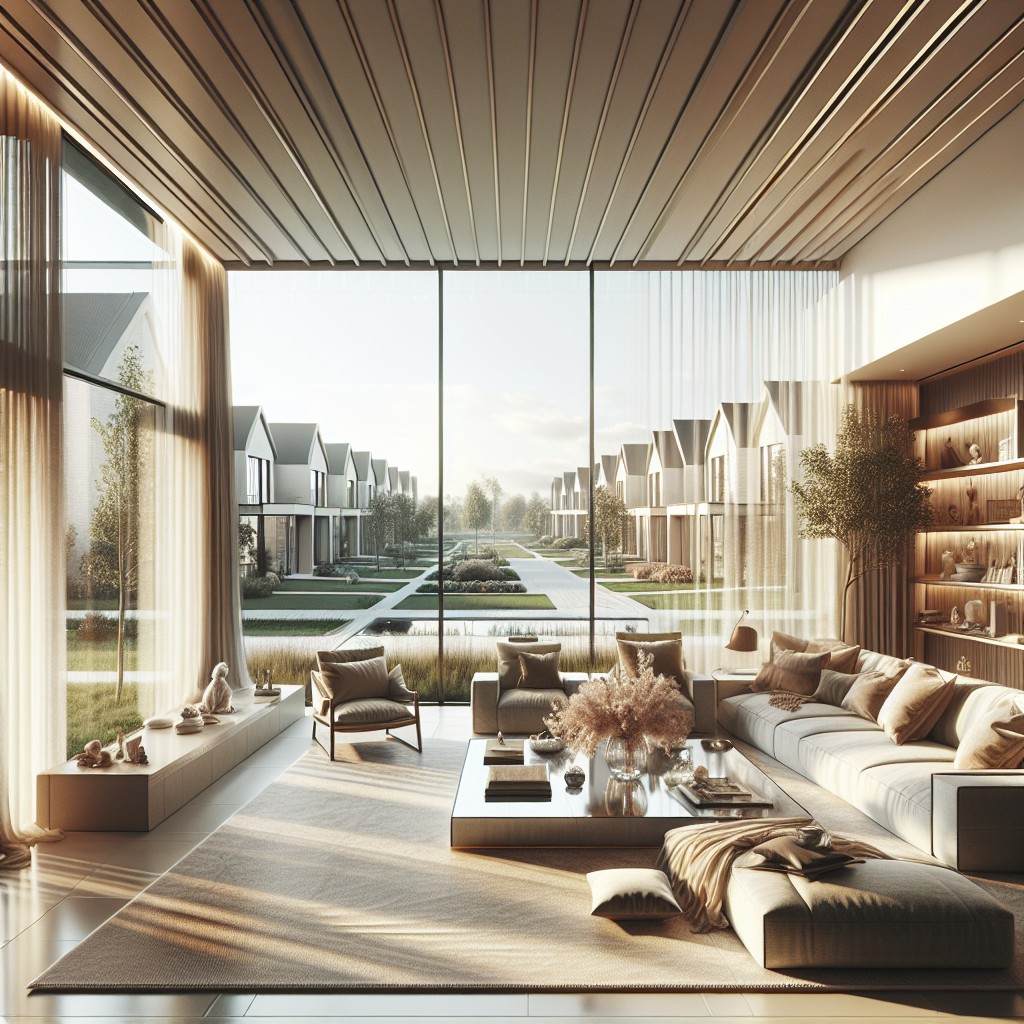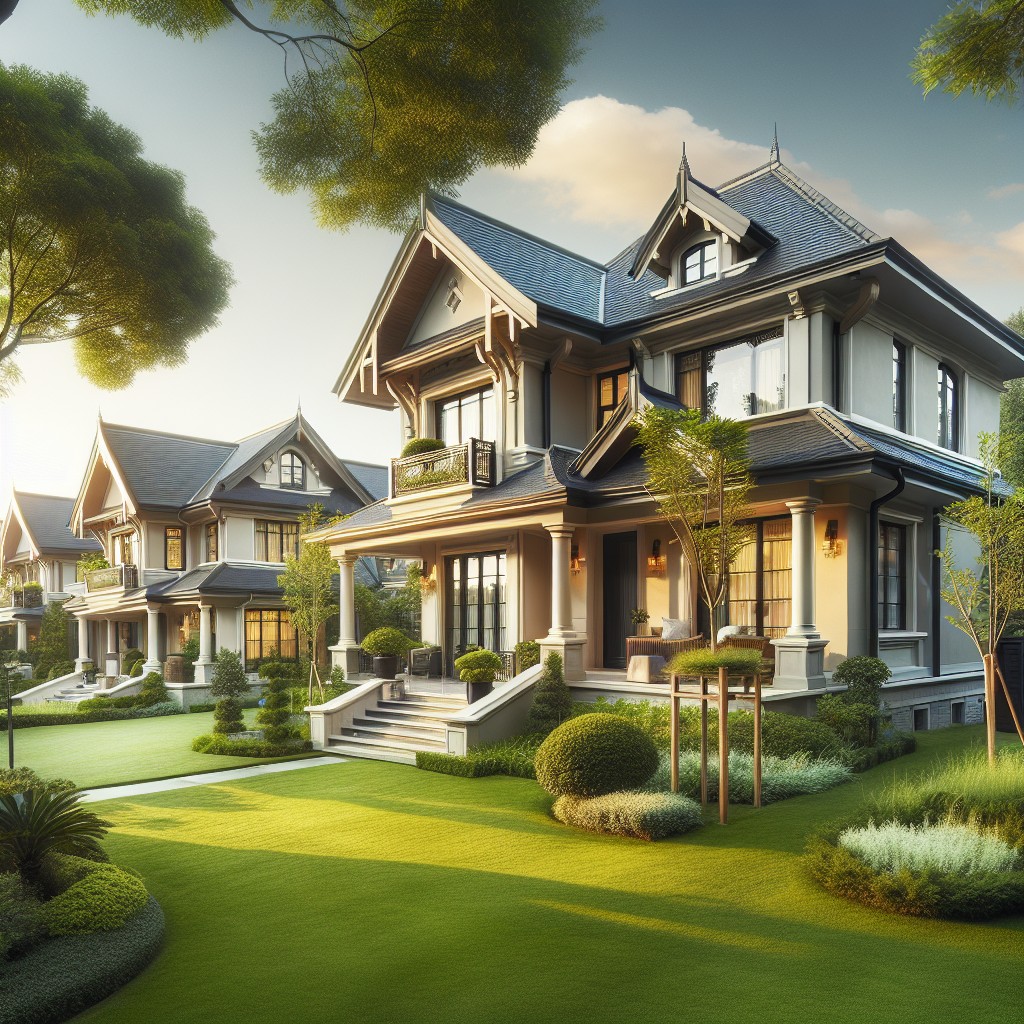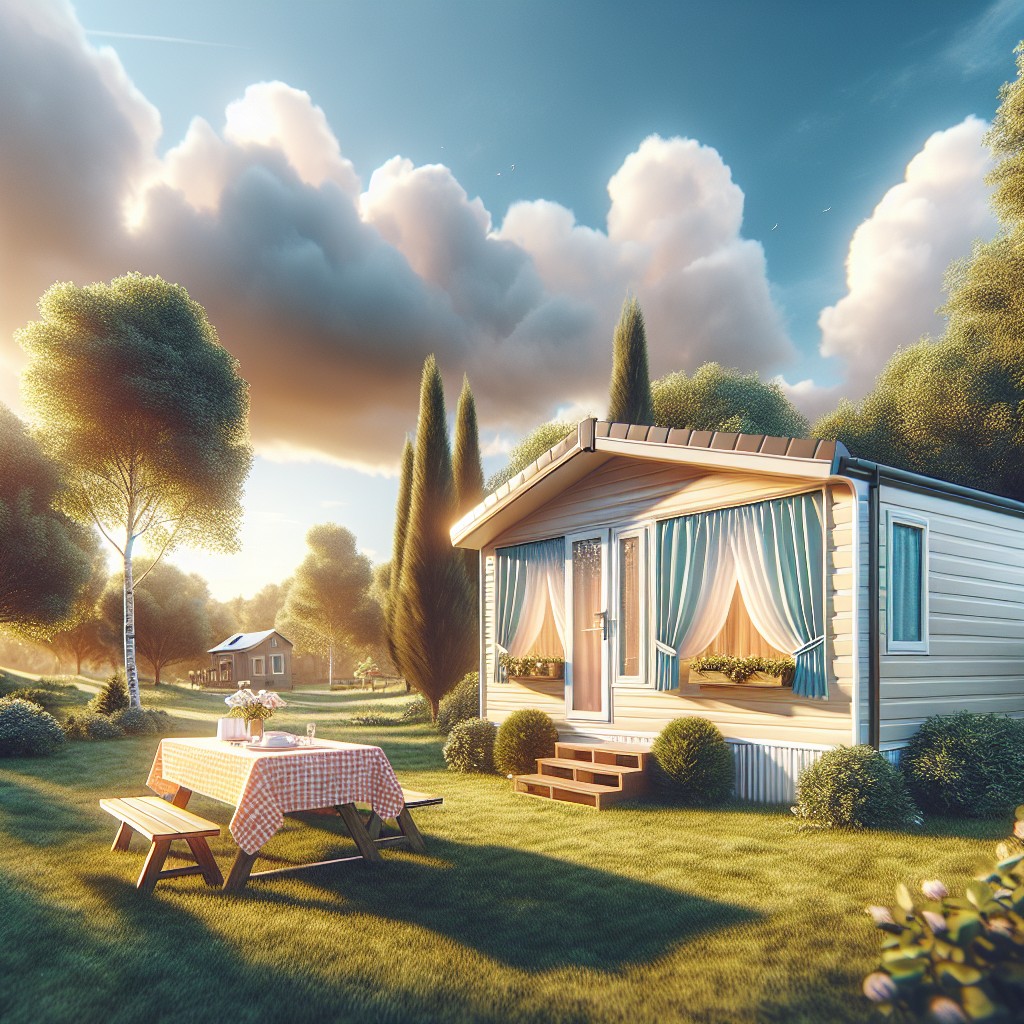Last updated on
Explore the benefits of opting for prefab homes because they offer a smart, efficient, and eco-friendly alternative to traditional construction methods.
Key takeaways:
- Cost-efficiency: Prefab homes reduce waste and streamline labor, resulting in cost savings for homeowners.
- Time-saving: Prefab homes can be completed in a fraction of the time compared to traditional construction methods.
- Sustainability: Prefab homes minimize environmental impact through efficient material usage and green features.
- Flexibility in design: Prefab homes offer customizable designs to suit diverse tastes and land constraints.
- Modern appeal: Technological advancements have led to innovative prefab designs that rival traditional homes.
Why Choose Prefab Homes?

Prefab homes offer numerous benefits as a housing solution. Key among these is cost-efficiency. Due to the controlled factory environment, prefab construction reduces waste and streamlines labor, which can translate into savings for the homeowner. Additionally, the controlled setting improves consistency and allows for better quality control, resulting in a durable and well-crafted home.
The time-saving aspect is also significant. Traditional construction can take months or even years, whereas prefab homes can be completed in a fraction of the time, as weather delays are less of a factor, and much of the construction happens simultaneously.
Sustainability is another compelling reason to choose prefabricated housing. The production process is designed to minimize environmental impact through efficient material usage and reduced on-site disturbances. Many prefab homes also come with green features, which can lead to lower energy consumption and a smaller carbon footprint.
Flexibility in design is yet another advantage. Prefab homes are not a one-size-fits-all solution. There is a wide range of customizable designs available to suit diverse tastes, needs, and land constraints. This level of customization ensures that practicality does not compromise personal expression in creating your ideal home.
Last but not least, the stigma traditionally associated with prefab homes is rapidly disappearing as technological advancements have led to innovative designs that rival traditional homes in appearance and functionality. This modern appeal, combined with the aforementioned benefits, underscores why prefab homes are a smart choice in today’s housing market.
Top Selling Prefab Homes
Prefab homes have gained traction for their blend of affordability, efficiency, and design versatility. Among the top-sellers are models from renowned builders like Blu Homes, known for their folding technology allowing for easy transport and setting; Method Homes with their eco-friendly approach and sustainability practices; and Deltec Homes, which offer round structures designed to resist extreme weather. Each offers a distinct take on the prefab concept:
Blu Homes boasts open-plan designs, energy efficiency, and materials that ensure longevity. Their homes are customizable and range from quaint one-bedroom layouts to expansive family residences.
Method Homes stands out with their commitment to sustainable building, offering LEED-certified prefabs and options for integrating renewable energy sources.
Deltec Homes specializes in hurricane-resistant circular homes that provide durability without sacrificing style, featuring panoramic views and a unique aesthetic.
These top sellers exemplify the core benefits of prefab homes: shorter construction times, reduced waste, and a controlled building environment leading to higher-quality finishes. Their popularity underscores the growing demand for sustainable, affordable, and stylish living solutions.
Custom Prefab Homes
Embracing innovation, custom prefab homes invite flexibility and personalization into the realm of sustainable living. These homes blend the efficiency of off-site construction with tailored designs to meet diverse needs and aesthetic preferences.
Here are key points on what makes custom prefab dwellings a unique housing choice:
- Tailor-Made Designs: Unlike standard models, custom options allow buyers to work with architects or designers to bring a unique vision to life within the prefab constraints.
- Eco-Friendly Materials: Customers can select sustainable materials that reduce the home’s environmental footprint, reinforcing the eco-conscious ethos of prefab living.
- Efficient Production: Custom prefab homes are created in a controlled factory setting, where precision and reduced waste are hallmarks of the process, leading to faster build times without sacrificing quality.
- Cost Transparency: A predefined manufacturing process enables clear pricing structures, allowing buyers to understand and control their costs better.
- Technology Integration: With the ability to incorporate the latest smart home technologies and energy-efficient systems, these homes are often ahead of the curve in residential innovation.
- Seamless Installation: Once the design is finalized and constructed, the components are transported to the site, where they are assembled with remarkable speed, vastly reducing construction-related disturbances.
Selecting a custom prefab home combines the desire for a distinctive living space with the practicality and swiftness of prefabricated construction, exemplifying modern homeownership.
Quality Prefabricated Homes
When considering a prefabricated home, it’s important to dive into what sets apart high-quality builds from the mediocre. Let’s unravel some key aspects of well-crafted prefab homes:
1. Materials: Superior prefab homes use materials that are not only durable but also eco-friendly. Look for energy-efficient windows, robust insulation, and sustainably-sourced timber.
2. Construction Standards: These homes are built in controlled factory settings, adhering to strict building codes. Construction in a weather-proof environment ensures precision and reduces the chance of defects.
3. Energy Efficiency: High-quality options often include smart design choices, like passive solar orientation, to maximize natural heating and cooling, reducing your energy footprint and bills.
4. Design Innovation: Beyond functionality, aesthetic appeal is crucial. Top-tier prefab homes feature cutting-edge designs that cater to diverse tastes and blend seamlessly with various landscapes.
5. Customization: The best prefab homes offer flexible layouts and customizable options, allowing you to tailor spaces to your lifestyle without compromising on build integrity.
6. Warranty Offerings: Reputable manufacturers stand by their products with warranties that cover structure, systems, and appliances, giving homeowners peace of mind.
By emphasizing these elements, high-quality prefab homes provide a sustainable, long-lasting, and comfortable living solution.
Tiny Homes, Custom Modular Homes, Prefab Homes
When diving into the world of small-scale, efficient living, it’s essential to differentiate between tiny homes, custom modular homes, and prefabricated (prefab) homes—each catering to various needs and lifestyles.
Tiny homes are just as they sound: compact, often mobile houses typically under 400 square feet. They maximize space and embrace minimalism, appealing to those looking to downsize or maintain a lower environmental footprint.
Custom modular homes are constructed in sections at a factory and then assembled on-site. This process allows for a customizable layout and design while maintaining the benefits of factory precision and reduced construction times.
Prefab homes encompass a broader category, including both modular and panelized homes. These are primarily built in a factory and shipped to the location for assembly. They often provide a quicker, more eco-friendly alternative to traditional stick-built homes, thanks to controlled manufacturing conditions and material efficiency.
While distinct, all three prioritize efficient use of space, material sustainability, and the advantage of a streamlined building process. Whether seeking the tiny home lifestyle, the flexibility of a custom modular home, or the efficiency of prefab construction, there’s an option to fit your specific home aspirations.
Quality Construction and Home Warranty
Prefabricated homes are synonymous with robust construction standards, leveraging factory-controlled environments to ensure consistency and precision. This method drastically reduces the likelihood of on-site construction challenges and material imperfections that can lead to long-term maintenance issues.
The warranty accompanying these homes often covers a wide range of potential defects in craftsmanship, materials, and structural integrity. It’s usual for manufacturers to offer:
- A one-year warranty for labor and materials
- A two-year warranty for electrical, plumbing, and heating delivery systems
- And up to a 10-year warranty for structural defects
These warranties provide homeowners with peace of mind, knowing that their investment is protected against unforeseen complications. While specifics may vary between builders, the emphasis is on delivering quality homes that stand the test of time, ensuring satisfaction and reliability for years to come. It’s essential for buyers to review warranty details to understand the scope and limitations before proceeding with their purchase.
A Modern, Cost-efficient Texas Modular Home Building Process
The Texas modular home building process is streamlined for efficiency and cost-effectiveness, embracing the latest in construction technology. Here are some key points to understand this approach:
- Climate-Controlled Construction: Homes are built indoors, mitigating weather-related delays and damage, ensuring a timely and predictable build schedule.
- Bulk Material Purchasing: Cost savings are passed to buyers through the purchase of materials in large quantities.
- State-of-the-Art Facilities: These ensure precision cuts and assembly, leading to tighter seals and better energy efficiency.
- Reduced Waste: Prefabrication minimizes excess material, contributing to both environmental sustainability and lower costs.
- Skilled Labor: Teams of experienced workers contribute to each build, bringing expertise in modular construction techniques.
- Speed of Assembly: Once the modules are complete, on-site assembly can take a matter of days, significantly reducing labor costs.
- Local Codes Compliance: Texas homes are designed to meet or exceed all local building codes, providing peace of mind regarding safety and durability.
This process not only makes Texas modular homes affordable but also offers the advantage of a modern building approach that aligns with today’s fast-paced, quality-conscious consumer expectations.
Our Process in California
Navigating the construction and installation of a prefab home in California requires a detailed understanding of state-specific regulations and procedures. California’s strict building codes, meant to ensure safety and sustainability, necessitate a precise approach to the entire process:
1. Site Evaluation: Assessing the location for suitability, including zoning laws and local ordinances, while considering the environmental impact of the build.
2. Permit Acquisition: Securing the necessary building permits with adherence to state-specific requirements, involving a detailed plan submission to local building departments for approval.
3. Design Customization: Collaborating with clients to tailor designs that align with their preferences and the unique Californian aesthetic, while ensuring efficiency in space utilization and energy consumption.
4. Factory Construction: Offsite construction of home modules in a controlled environment, reducing waste and increasing speed without compromising on quality.
5. Transportation Logistics: Planning the route and method for delivering the prefabricated sections from the factory to the building site with minimal disruption.
6. Assembly and Finishing: Executing a seamless on-site assembly, with precision on final touches, utility connections, and inspection compliance to make the house move-in ready.
7. Post-Installation Support: Providing ongoing assistance for maintenance and warranty services, ensuring homeowners are supported well beyond the initial installation.
Manufactured Housing in California
In California, manufactured housing refers to homes constructed in a factory setting and then transported to a designated site for assembly. These homes adhere to federal HUD Code standards rather than local building codes, ensuring uniformity in safety and construction quality. Notably, they differ from traditional on-site builds and are a cost-effective alternative in California’s expensive housing market.
Key Points:
- Affordability: Generally more budget-friendly than site-built houses due to the efficiencies of mass production and reduced labor costs.
- Regulations: Governed by HUD standards; requires certification for conformity, which promotes consistency in the building process.
- Location Flexibility: Can be placed in manufactured home communities or privately owned land, subject to local zoning laws.
- Design Variety: Offers diverse styles and floor plans with options for customization to meet homeowner preferences.
- Ownership Structure: Can be purchased outright, financed through chattel loans (personal property loans), or traditional mortgages if the home is fixed to a permanent foundation and classified as real estate.
Understanding these elements of manufactured housing in California is crucial for buyers considering a cost-efficient, quicker path to homeownership in the Golden State.
Financing Your Backyard Home With a Remodel Loan
Financing a backyard prefab home can be streamlined with a renovation loan. Here’s how it works:
- Renovation Loan Basics: These loans combine the purchase price of the home and the cost of upgrades or repairs into a single mortgage. This means you’re making one monthly payment for both your prefab unit and its installation.
Eligibility: You’ll need a credit score that meets lender requirements and a debt-to-income ratio that demonstrates your ability to manage monthly payments.
Loan Types: The FHA 203(k) and Fannie Mae HomeStyle loans are often used for such projects. They allow for both minor and major renovations, including complete teardowns, as long as the foundation remains intact.
Benefits: These loans often come with lower interest rates compared to personal loans and credit cards. They also typically have longer repayment terms, spreading out the cost and making it more manageable.
Process: After loan approval, funds for the prefab home purchase are released to the seller, while the portion allocated for remodeling is placed in an escrow account and paid out as the work progresses.
Considerations: You’ll have to factor in the extra time and paperwork for inspections and draw schedules for releasing funds, so be prepared for a process that is a bit more involved than a standard home loan.
FAQ
Is it cheaper to build or buy prefab?
Building a prefab home generally proves to be less costly than constructing a comparable stick-built home, primarily due to the reduction in labor needs and construction time.
How much does a modular home cost in MN?
The cost of a modular home in Minnesota typically ranges from $55 to $85 per square foot.
How much does a prefab house cost in the US?
In the US, a base model prefab house costs between $180,000 to $360,000, while a custom modular home ranges from $130 to $310 per square foot including installation.
What is the average cost of a modular home in Texas?
The average cost of a modular home in Texas ranges from $120,000 to $270,000, including installation, with the price per square foot varying from $80 to $160.
How does the cost of a prefab home compare to traditional construction methods?
Prefab homes generally cost less than traditionally constructed homes due to standardized production methods, faster build times, and less material waste.
Can the location impact the final cost of installing a prefab home?
Yes, the location can significantly impact the final cost of installing a prefab home due to variable factors such as land price, transportation costs, local building codes, and labor rates.
What costs should one anticipate when maintaining a prefab home over time?
The costs to anticipate when maintaining a prefab home over time include regular upkeep expenses such as cleaning, repairs, utility bills, as well as less frequent, yet significant costs like replacement of components, upgrading insulation, and maintaining the surrounding landscape.
Related reading:
Table of Contents





